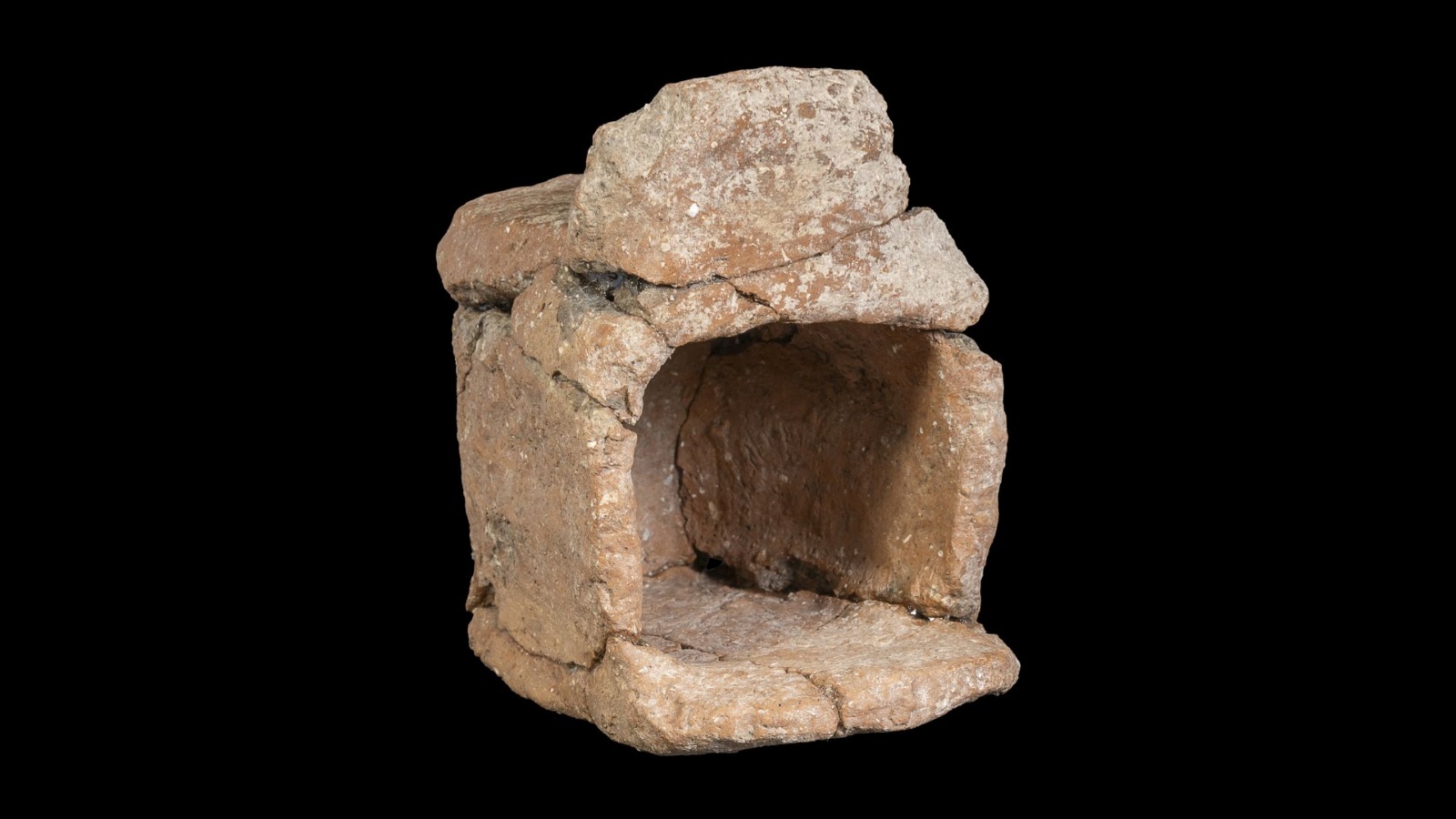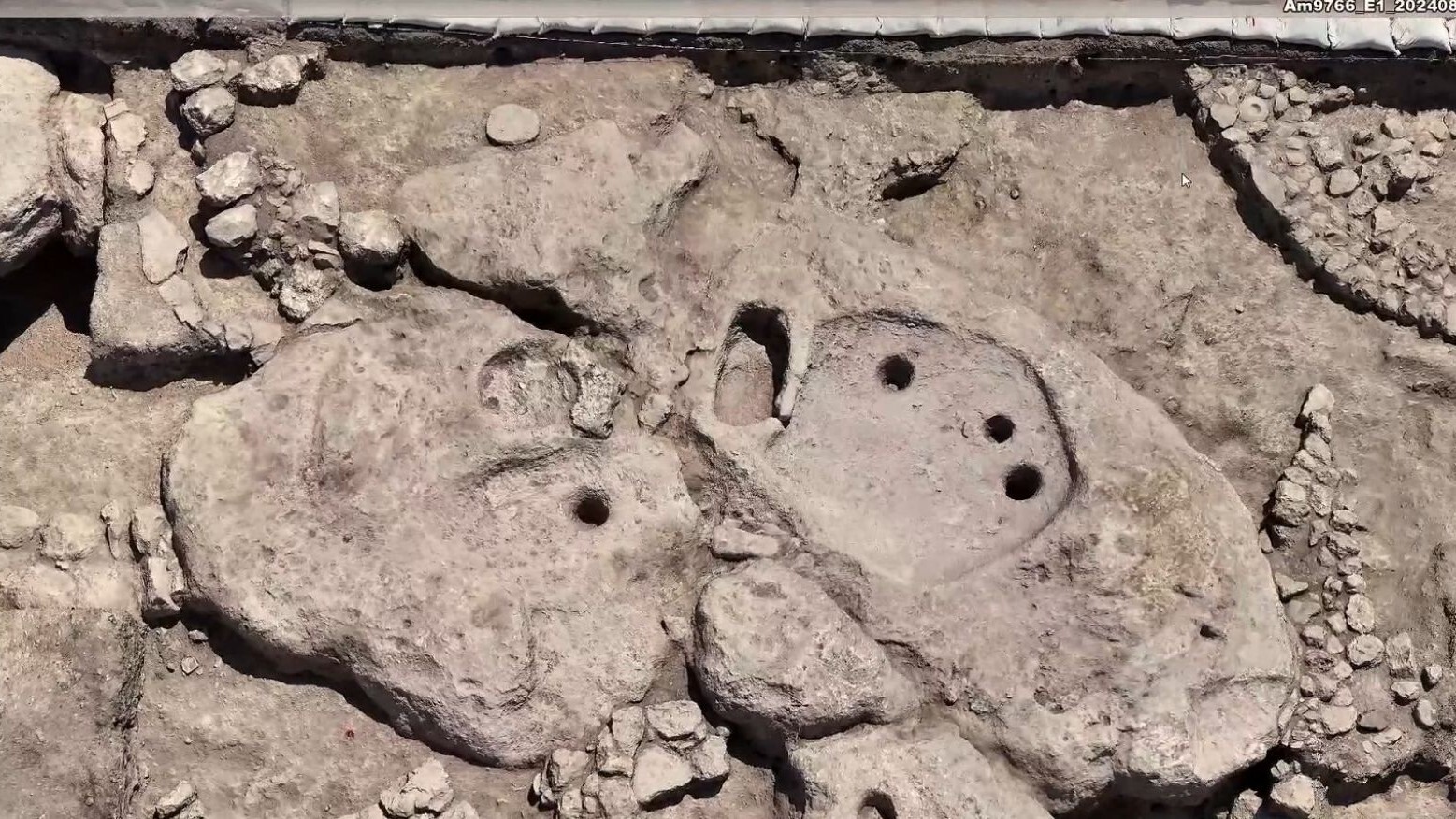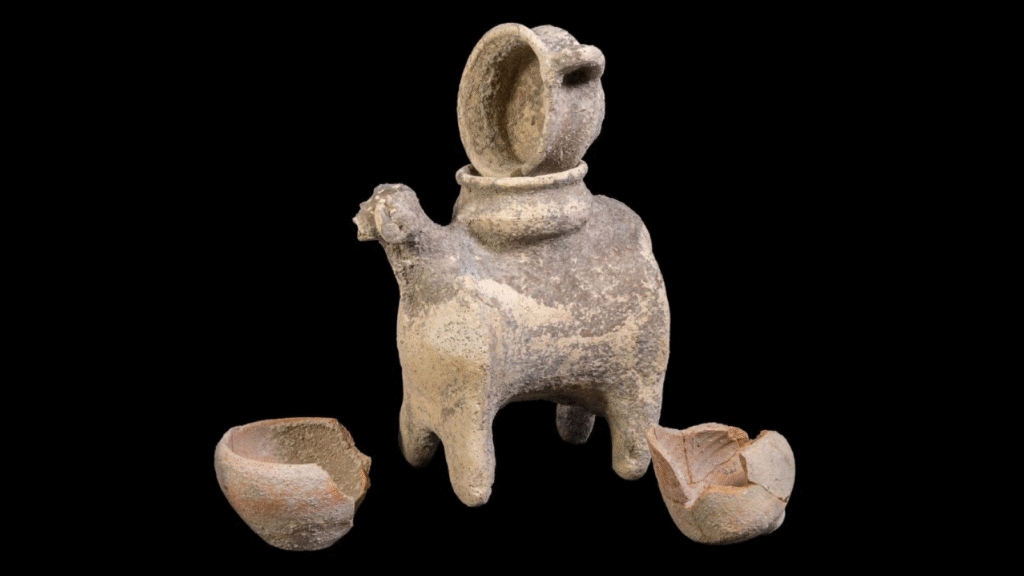Archaeologists excavating near the ancient Israeli city of Armageddon have unearthed a 3,300-year-old Canaanite “tea set,” a temple the size of a dollhouse, and one of the world’s oldest known wine presses.
The tea set includes a ram-shaped teapot and several small bowls that were buried together in the Late Bronze Age. The ram’s head, molded into the spout, was tilted forward, likely allowing liquid to spill from its mouth.
you may like
Animals such as sheep, donkeys, and goats were highly prized in Canaan, and there is evidence that during part of the Old Kingdom period (ca. 2649 BC to 2150 BC), some of these animals were domesticated in Egypt and then imported to Canaan, some for sacrificial purposes.
The Canaanites likely buried teapots and bowls as ritual offerings, the statement said. Archaeologists unearthed a tea set near Megiddo, also known as Armageddon, ahead of road construction in the Jezreel Valley.
Other Canaanite cult offerings discovered in several small holes during excavations included preservation jars and pitchers imported from Cyprus. These artifacts were likely buried by local people, including farmers who were unable to enter the city, and the Canaanite temple at nearby Tel Megiddo (“Tel” meaning hill). Instead, they may have chosen to bury these offerings, and perhaps agricultural crops, in rock outcrops that may have served as outdoor altars, the statement reported.
The buried mini-temple made of ceramics is also 3,300 years old. “This may have been what the actual Canaanite Late Bronze Age temple looked like,” Amir Golani, one of the IAA excavation directors at the site, said in a translated video.

Excavation of Armageddon
People have lived in Megiddo since about 7000 BC. Many battles were fought there over the years, and the Book of Revelation called this place Armageddon and prophesied that the final battle of the end times would take place there.
The excavations revealed artifacts from two different eras of Megiddo. One is from the Early Bronze Age (or Early Canaanite), about 5,000 years ago, and the other is from the Late Bronze Age (or Late Canaanite), about 3,300 years ago, and includes a tea set.
“Megiddo has been excavated for over a century,” the researchers wrote. But while it has long been known as a site of “ancient urbanism and Canaanite worship,” the new excavations reveal a new area between the ancient city and the activities that took place around and outside the city, the researchers wrote.

The research team was surprised to discover a 5,000-year-old small excavated wine-making press, the oldest of its kind known in the world. The press was carved into a rock with an inclined surface on which the grapes were trodden, leading to a collection tank.
“This winepress is unique and one of the few known from the ancient era of the first urbanization in our region,” Golani and Barak Tsin, the site’s IAA excavation director, said in a joint statement. “Up until now, there has been indirect evidence that wine may have been produced as early as 5,000 years ago, but there has been no conclusive evidence to prove this, a ‘smoking gun’ that clearly indicates when wine originated in our region.”
The research team also excavated a number of residential buildings around the winepress. This indicates that winepresses may have been important to the local community.

watch on
Source link

